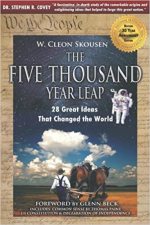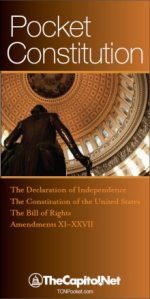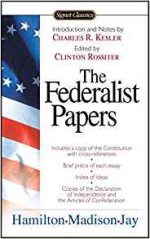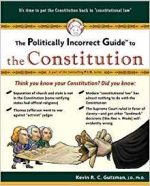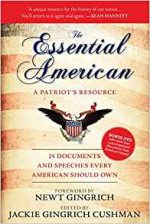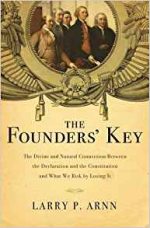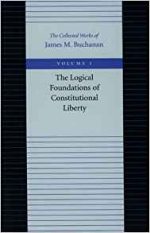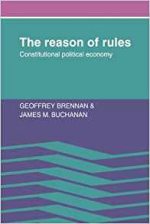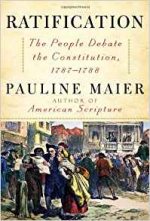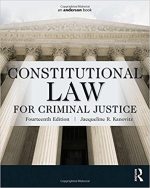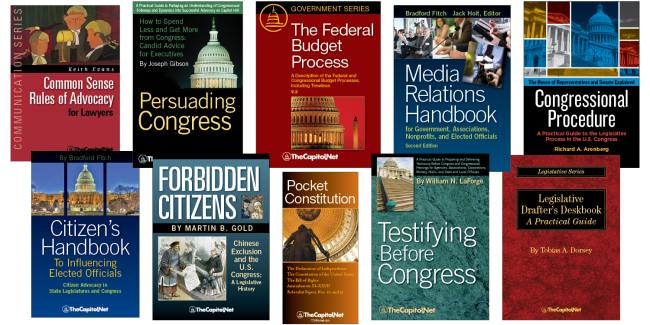The United States Constitution
The Copyrights and Patents is one of Congress’ enumerated powers found in the Constitution of the United States, Article. I. Section. 8., clause 8:
(Clause 8 – Copyrights and Patents)
[The Congress shall have Power] To promote the Progress of Science and useful Arts, by securing for limited Times to Authors and Inventors the exclusive Right to their respective Writings and Discoveries;

From the U.S. Senate web site:
Copyright and patent protection of authors and inventors are authorized by this clause, although it uses neither word.
From the USPTO:
Some people confuse patents, copyrights, and trademarks. Although there may be some similarities among these kinds of intellectual property protection, they are different and serve different purposes.
What Is a Patent?
A patent for an invention is the grant of a property right to the inventor, issued by the Patent and Trademark Office. The term of a new patent is 20 years from the date on which the application for the patent was filed in the United States or, in special cases, from the date an earlier related application was filed, subject to the payment of maintenance fees. US patent grants are effective only within the US, US territories, and US possessions.
The right conferred by the patent grant is, in the language of the statute and of the grant itself, “the right to exclude others from making, using, offering for sale, or selling” the invention in the United States or “importing” the invention into the United States. What is granted is not the right to make, use, offer for sale, sell or import, but the right to exclude others from making, using, offering for sale, selling or importing the invention.
What Is a Trademark or Servicemark?
A trademark is a word, name, symbol or device which is used in trade with goods to indicate the source of the goods and to distinguish them from the goods of others. A servicemark is the same as a trademark except that it identifies and distinguishes the source of a service rather than a product. The terms “trademark” and “mark” are commonly used to refer to both trademarks and servicemarks.
Trademark rights may be used to prevent others from using a confusingly similar mark, but not to prevent others from making the same goods or from selling the same goods or services under a clearly different mark. Trademarks which are used in interstate or foreign commerce may be registered with the Patent and Trademark Office. The registration procedure for trademarks and general information concerning trademarks is described in a separate pamphlet entitled “Basic Facts about Trademarks“.
What Is a Copyright?
Copyright is a form of protection provided to the authors of “original works of authorship” including literary, dramatic, musical, artistic, and certain other intellectual works, both published and unpublished. The 1976 Copyright Act generally gives the owner of copyright the exclusive right to reproduce the copyrighted work, to prepare derivative works, to distribute copies or phonorecords of the copyrighted work, to perform the copyrighted work publicly, or to display the copyrighted work publicly.
The copyright protects the form of expression rather than the subject matter of the writing. For example, a description of a machine could be copyrighted, but this would only prevent others from copying the description; it would not prevent others from writing a description of their own or from making and using the machine. Copyrights are registered by the Copyright Office of the Library of Congress.
What Are Patents, Trademarks, Servicemarks, and Copyrights? – USPTO
Can Artists Make Money Without Copyrights? – LearnLiberty
Knocking down the barriers of artificial scarcity opens up tremendous new opportunities — just as knocking down the artificial scarcity known as “protectionism” helps to grow markets by creating new opportunities. In this case, those new opportunities have only increased in number as we’ve gone digital, making more content infinite in nature. Where some people have trouble is that those new opportunities may be in different places than the existing opportunities — and those new opportunities may not all be capturable by the creator of the content. Indeed, there will be some externalities created by the free flow of an infinite resource. However, the total amount that any content creator can capture is still much larger than it was before. It’s one of those cases where getting 20% of a huge pie is much better than getting 90% of a tiny pie.
“The Grand Unified Theory On The Economics Of Free,” by Mike Masnick, Techdirt, May 3, 2007
More
- Pocket Constitution
- The Constitution of the United States: A Transcription – The National Archives
- United States Constitution: Texts, Commentaries, Historical Texts and Judicial Decisions – Law Library of Congress
- CRS Annotated Constitution
- The Constitution of the United States of America: Analysis and Interpretation – FDsys
- Constitution of the United States of America: Analysis and Interpretation, Govinfo.gov
- CRS Annotated Constitution, LII
- Heritage Guide to the Constitution
- “Federalism and the Constitution: Limits on Congressional Power,” CRS Report RL30315 (31-page PDF
 )
) - “Legislative Powers of Congress: A Brief Reference Guide,” CRS Report 97-434 (20-page PDF
 )
) - United States Patent and Trademark Office (USPTO)
- United States Copyright Office
- Clause 8. Copyrights and Patents – from Findlaw
- Clause 8. Copyrights and Patents – from Cornell’s Legal Information Institute (LII)
- Copyright Clause – from Wikipedia
- United States copyright law – from Wikipedia
- United States patent law – from Wikipedia
- Mark Twain on Copyright
- Categories on Techdirt: Copyright | Intellectual Property | Patents | Trademark
- American Intellectual Property Law Association (AIPLA)
- Association of Patent Law Firms (APLF)
- Bloggers’ FAQ on Intellectual Property – EFF
- The IP Law Blog – Weintraub Genshlea Chediak Tobin & Tobin
- Dear Rich: Nolo’s IP Law Blog
- Copyright Matters: Digitization and Public Access – Library of Congress
- “Copyright Law: Digital Rights Management Legislation,” CRS Report RL32035 (18-page PDF
 )
) - “Copyright Term Extension: Estimating the Economic Values,” CRS Report 98-144 (32-page PDF
 )
) - “Fair Use on the Internet,” CRS Report RL31423 (18-page PDF
 )
) - “‘Digital Rights’ and Fair Use in Copyright Law,” CRS Report RL31827 (19-page PDF
 )
) - “Generative Artificial Intelligence and Copyright Law,” CRS Legal Sidebar LSB10922 (8-page PDF
 )
) - “An Overview of Recent U.S. Supreme Court Jurisprudence in Patent Law,” CRS Report RL33923 (35-page PDF
 )
) - “The Bayh-Dole Act: Selected Issues in Patent Policy and the Commercialization of Technology,” CRS Report RL32076 (33-page PDF
 )
) - “An Examination of the Issues Surrounding Biotechnology Patenting and Its Effect Upon Entrepreneurial Companies,” CRS Report RL30648 (37-page PDF
 )
) - “Patent Law: A Handbook for Congress,” CRS Report R46525 (37-page PDF
 )
) - “Internet Domain Names: Background and Policy Issues,” CRS Report 97-868 (39-page PDF
 )
) - “Intellectual Property Law: A Brief Introduction,” CRS In Focus IF10986 (5-page PDF
 )
) - “Copyright Law: An Introduction and Issues for Congress,” CRS In Focus IF12339 (5-page PDF
 )
)
Patents, Prizes, and Subsidies
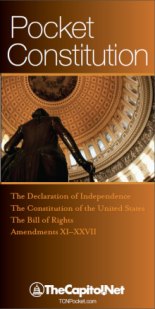
A free download of our Pocket Constitution is available on Scribd.
Our Pocket Constitution: details on our web site.
|
The Five Thousand Year Leap: 28 Great Ideas That Changed the World |
The American Patriot’s Almanac: Daily Readings on America |
Pocket Constitution |
The Federalist Papers |
|
The Politically Incorrect Guide to the Constitution |
The Ideological Origins of the American Revolution |
The Essential American: 25 Documents and Speeches Every American Should Own |
The Founders’ Key: The Divine and Natural Connection Between the Declaration and the Constitution and What We Risk by Losing It |
|
Logical Foundations of Constitutional Liberty |
The Reason of Rules: Constitutional Political Economy |
Ratification: The People Debate the Constitution, 1787-1788 |
Constitutional Law for Criminal Justice |
Courses
- Congressional Operations Briefing – Capitol Hill Workshop
- Drafting Federal Legislation and Amendments
- Writing for Government and Business: Critical Thinking and Writing
- Custom Training
For more than 40 years, TheCapitol.Net and its predecessor, Congressional Quarterly Executive Conferences, have been teaching professionals from government, military, business, and NGOs about the dynamics and operations of the legislative and executive branches and how to work with them.
Our custom on-site and online training, publications, and audio courses include congressional operations, legislative and budget process, communication and advocacy, media and public relations, testifying before Congress, research skills, legislative drafting, critical thinking and writing, and more.
TheCapitol.Net is on the GSA Schedule, MAS, for custom on-site and online training. GSA Contract GS02F0192X
TheCapitol.Net is now owned by the Sunwater Institute.
Teaching how Washington and Congress work ™

